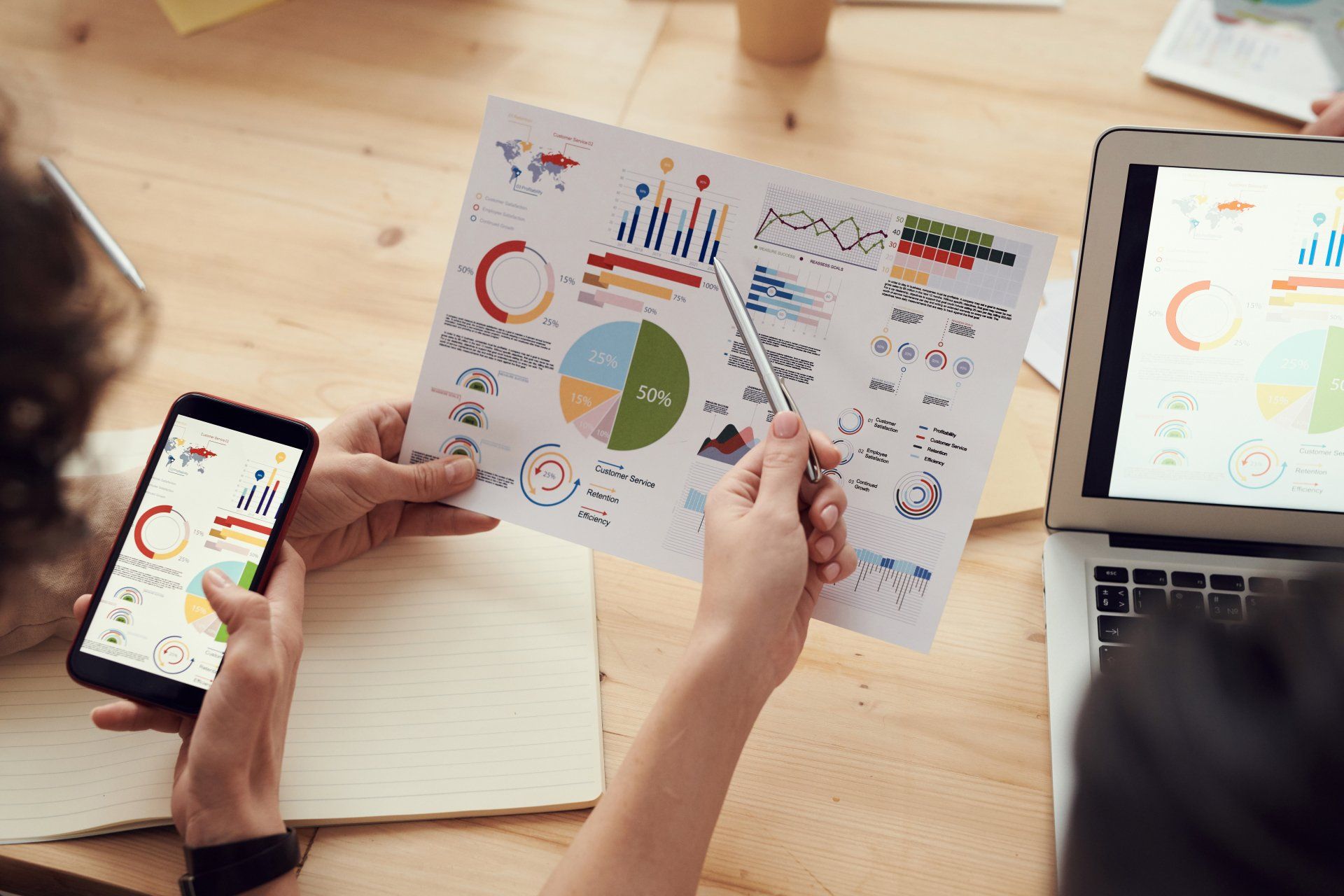A lot of people assume that success and failure are determined by what you do, rather than how well you use data. And while that may be true to an extent, there is a big difference between the two.
Successful businesses rely on data to make informed decisions about their operations. They use it to identify and address problems early, so they can correct them before they become bigger issues. This prevents failures from becoming long-term setbacks for companies and allows them to stay ahead of the competition.
Meanwhile, unsuccessful businesses often don't heed warning signs from their
data sets - or worse yet, choose not to act on them because they're afraid of what might happen. As a result, these businesses find themselves stuck in difficult situations where progress grinds to a halt or even reverses course entirely due to bad decision-making based on faulty information.
Success is not a destination, it's a journey
It's the sum total of our decisions and actions over time. Whether we're working towards something or just taking each day as it comes, the key to success is consistency and patience. Keep grinding forward no matter what obstacles come your way, and you'll be on your way to achieving whatever your heart desires.
What is data?
Data is anything that is used to make a decision. It can be information, statistics, or even just empirical evidence.
When it comes to data analytics, it's important to understand what data represents and how you can use it most effectively for your business or project.
There are three main types of data:
descriptive,
predictive, and
prescriptive. Descriptive data provides information about the current state of something (for example, how many customers have made a purchase in the past month), while predictive data informs you about future events or outcomes (for example, which customers are likely to buy more products in the future). Prescriptive data tells you what should be done based on the analysis of this type of data (such as creating marketing campaigns based on predicted customer behavior).
Each type of data has its own benefits and drawbacks. For example, descriptive data is often very accurate but may not reflect user sentiment accurately. On the other hand, predictive data can help
businesses make informed decisions quickly and efficiently - but it may not always be 100% accurate. Finally, "prescription" data enables businesses to prescribe actions that they believe will result in the desired outcome - but again this type of analysis carries with it some risk factor due to human error involved in making these predictions."
The power of data
Data is the lifeblood of any business. It's what allows businesses to understand their customers and track how they are using their products or services. And it's also what allows businesses to make informed decisions about where to focus their resources.
How to use data to achieve success
There's no doubt that data plays an important role in business success. In fact, some experts believe that without good data, businesses wouldn't be able to survive for very long. So how can you use data to your advantage? Here are four tips:
- Analyze your past performance and track changes over time. This will help you understand what works well for your business and which strategies need to be adjusted or improved.
- Use predictive analytics to make forecasts about future trends based on current data. This can help you plan ahead and make decisions based on reliable information rather than guesswork or intuition.
- Use Big Data technologies such as Hadoop and Spark to collect massive amounts of valuable information in a manageable format. Once this data is organized and analyzed, it can provide insights that would otherwise be impossible to obtain.
- Utilize machine learning algorithms (such as neural networks) to improve the accuracy of your predictions by extracting hidden patterns from large datasets.. By doing so, you can save lots of time and money while still achieving accurate results
Why you need data-driven decision making
Data-driven decision-making is essential for businesses of all sizes, in order to make the best decisions possible. By using data analytics and other quantitative tools, you can optimize your operations and achieve greater success. You can also use data to forecast trends and potential problems so that you are able to act quickly and decisively when they arise.
By using data-driven decision-making, you can improve your overall business efficiency and performance. In addition, by understanding customer needs better than ever before, you can create a more satisfying experience for both yourself and your customers. Armed with this knowledge, it will be much easier for you to identify new opportunities as they arise - which will lead to even greater profits!
When data isn't enough - understanding your emotions when making decisions
Making decisions can be difficult, especially when data isn't enough to make an informed decision. That's why it's important to understand your emotions when making a decision - they can help you make better choices.
Your emotions play a big role in how you think and process information. They act as filters that help you decide what is important and how best to respond. When making a decision, your emotions are constantly at work, guiding your thoughts and actions.
There are three main layers of emotion: conscious, subconscious, and deep subconscious (or shadow). The conscious layer is the most aware part of our mind and allows us to communicate with other people or analyze situations objectively. The subconscious layer processes information quickly but may not always be accurate or rationalized well later on. The deep unconscious contains memories that we don’t usually pay attention to but can still influence our behavior in subtle ways.
Knowing the difference between good and bad data
There's a big difference between good and bad data. Good data is accurate, up-to-date, relevant, and useful. Bad data is inaccurate, out-of-date, irrelevant, or useless.
Your business depends on good data to function properly. If your data isn't reliable or if it's full of errors, you won't be able to use it to make informed decisions or carry out your plans correctly.
So how do you know when the data you're using is actually good? The best way to determine this is by testing it against reality. You can do this by conducting surveys or market research studies that target specific groups of people in your target market. This will help you verify the accuracy of your information and ensure that it remains current over time.
The importance of analytics
Data Analytics is one of the most important skills that businesses can have today. It allows businesses to identify patterns and trends in their data, so they can make informed decisions about how to best market their products and services, as well as allocate resources more efficiently.
In addition, data analytics helps you understand customer behavior and preferences, which enables you to create better product designs or improve your marketing campaigns accordingly. Finally, it also allows you to track the progress of your business goals over time – whether that's increasing sales volume or decreasing expenses.
So why is data analytics such an important skill? Because without it, businesses will be at a disadvantage when competing against companies who are able to harness its power effectively. And with all the changes happening in the world today (such as disruptive technologies emerging every day), being able to capitalize on these changing realities is critical if your company wants to stay competitive.
How to collect data
Data collection is one of the most important aspects of data analysis. Without accurate and timely data, it's nearly impossible to make informed decisions or create effective marketing campaigns.
The way you collect your data affects the quality and accuracy of that data. There are a number of different ways to collect data, each with its own benefits and drawbacks. Here are four tips for collecting accurate and useful data:
- Use Surveys: Surveys allow you to ask a large number of people questions about their experiences, opinions, or preferences. They're an inexpensive way to get information from a wide range of people in a short amount of time. However, surveys can be susceptible to bias (due to the fact that survey respondents may have been asked specifically by the researcher), so they should always be taken with a grain of salt.
- Capture Data Through Captured Forms: Using captured forms allows you not only gather quantitative but also qualitative information about user behavior. This type of reporting gives companies insights into how users interact with their products or services - something that can't be easily gleaned from surveys alone..
- Use Automated Tools: Many businesses now rely on automated tools as part as their Data Collection process because they're more efficient than manual methods.. These tools capture detailed information such as contact details, purchase history, website activity etc., making it much easier for business owners and marketers to analyze this valuable intel..
- Employ A Third Party Analyst To Assist With The Process
The power of data visualization
Data visualization is one of the most powerful tools an individual or business can have in their toolkit. By using data visualization, you can quickly and easily understand complex information, making it easier to make informed decisions.
There are a number of different types of data visualizations available, each with its own advantages and disadvantages. However, the most common type of data visualization is the bar graph. A bar graph shows how many units (usually bars) are in a group or category, by color-coding them based on their intensity or magnitude. This makes it easy to see which groups or categories contain more/less variation than others.
Bottom Line
Without
data, you cannot succeed in any venture. You need to collect as much information as possible and analyze it correctly in order to make the right decisions. This information can come from your own observations and experiences, or it can be collected through surveys, interviews, or other forms of research.
Once you have this valuable data at your disposal, you can begin to make changes that will lead to success. Then keep track of the results (both positive and negative) so that you can continue making improvements until your business reaches its full potential.









